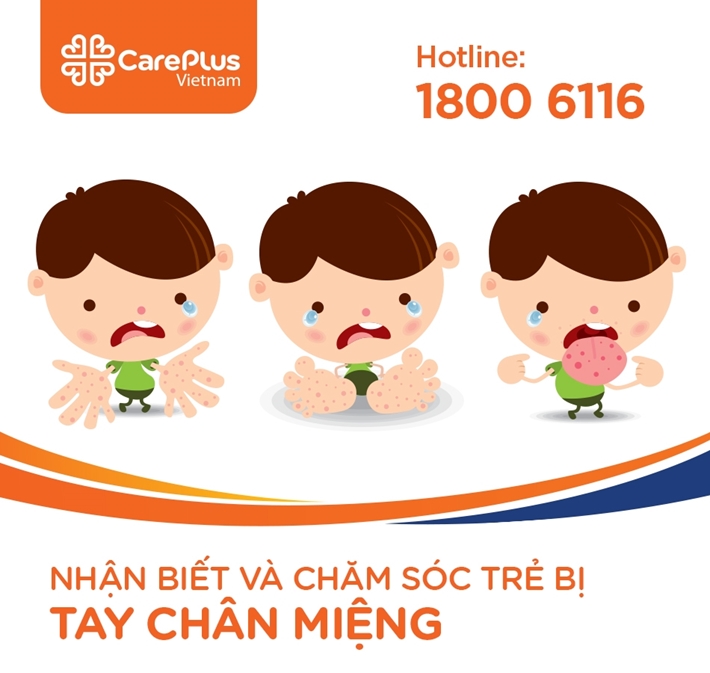Hand Foot Mouth Diseases (HFMD)

1/16/2018 2:41:48 PM
1. What is HFMD?
HFMD is a serious infectious disease, which is caused by intestinal viruses. Two common pathogens are Coxsackie virus A16 and Enterovirus 71 (EV71).
HFMD occurs all year round in nearly all regions. In Southern provinces, this disease significantly increases from Feb to May and from Sep to Dec every year.
HFMD can occurs at any age but most at children under 5 years old, especially at children under 3 years old.
2. What are manifestations of HFMD?
After 3-6 days exposure to HFMD, the first symptoms appear, such as mild fever, fatigue, sore throat, crying,…Children infected EV71 even have more symptoms such as diarrhea several times a day, vomiting. After that, there are small blisters appearing in the buttocks, knees, palms, heart, legs, fingers, toes,...and usually painless publication. These blisters will then fall away and leave bruises after 5-7 days. Symptoms are usually severe in the first few days but then completely disappear within a week.
3. Is HFMD serious?
Most of HFMD cases spontaneously recover. Common problems happens to HFMD children is water loss due to pain at mouth and lack of water. However, the recent outbreaks of disease show that EV71 virus can damage the central nervous system and cause severe systemic complication, which can be fatal to some children, especially to children under 5 years old.
4. How to care children with HFMD?
Reduce a fever: Can use paracetamol or ibuprofen to reduce a fever and pain at mouth. Dosage depending on weigh of children and under doctor’s guidance.
Drink more water: Feed children with more digestible liquid food. Cold food and drinks are easier to eat.
Reduce pain at mouth: paracetamol or ibuprofen can help to reduce pain at mouth.
5. Can HFMD spread to other people?
Children with HFMD can spread the virus to people around them. HFMD can easily spread in the first week, so let the children be at home at least a week to 10 days.
6. How can HFMD spread?
Viruses causing HFMD often spread through people to people by these ways:
Respiratory:
Due to exposure to droplets containing viruses when children with HFMD cough, sneeze or even talking.
Due to exposure to respiratory secretions (nasal mucus or saliva) on objects infected by the patient.
Fecal – Oral:
Due to exposure to the feces of sick children. Hands of sick children are contaminated after going to the toilet, then they touch other objects around them. Healthy children can touch these objects and then accidentally put their hands into mouth.
7. How to prevent and control HFMD from spreading?
- Teach children with HFMD to cover their mouth with tissue when sneezing or coughing, and wash their hands immediately after contacting with mucous secretions.
- Wash hands after changing diapers
- Wash, clean and sanitize children toys infected mucous secretions and saliva.
- Avoid sharing food or sharing personal items such as eating utensils, toothbrushes and towels.
- No hugging, kissing and sharing drinking glasses or other items. Let children with HFMD stay alone in the period of infection.
- Sterilize the surface of items that children regularly contact with, very useful to prevent infection to other people.
8. Can children with HFMD go to school?
Usually, children with HFMD can still go to school, unless:
- Children are not fine or have a fever
- Children have lots of ulcers in mouth
- Teachers cannot take good care of children
Ideally, parents should let children stay at home in the first week to detect severe symptoms.
9. Can children be re-infected HFMD?
Children can still be re-infected by the same previous virus or other viruses causing HFMD.